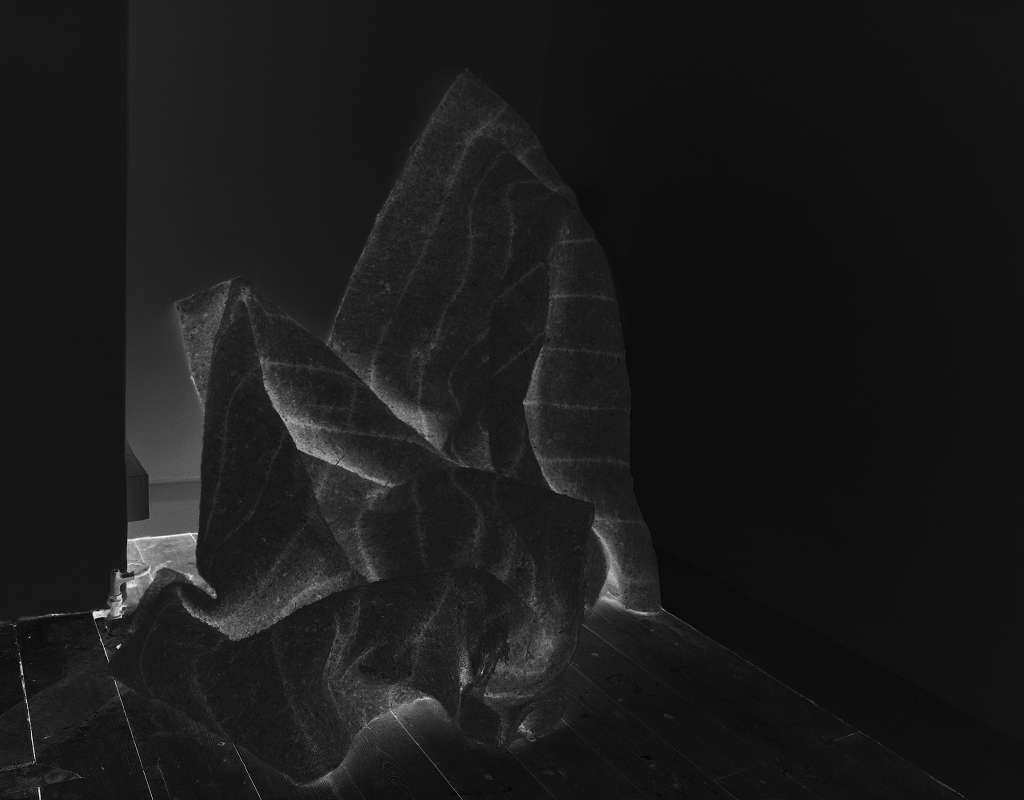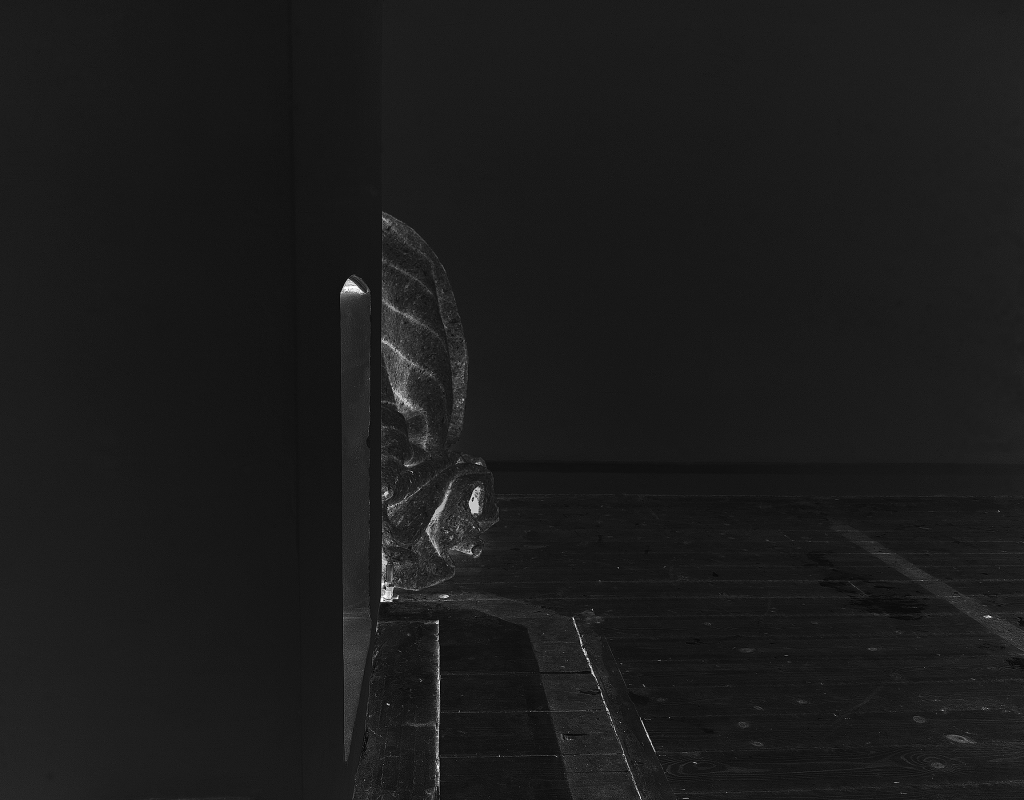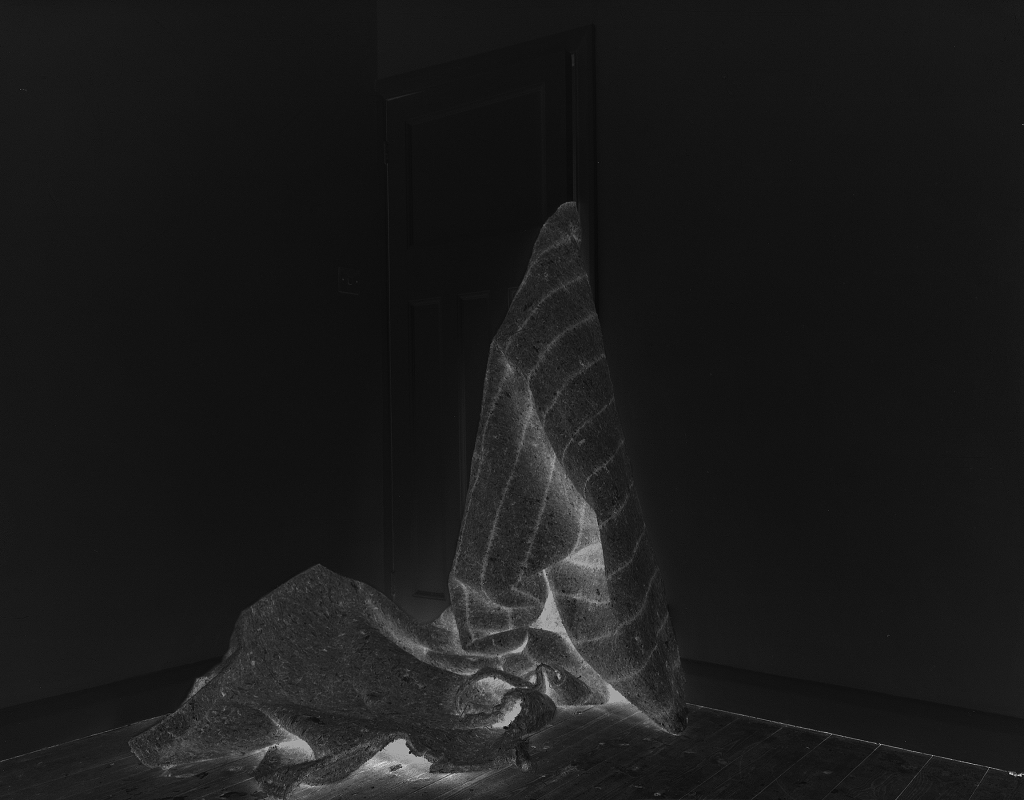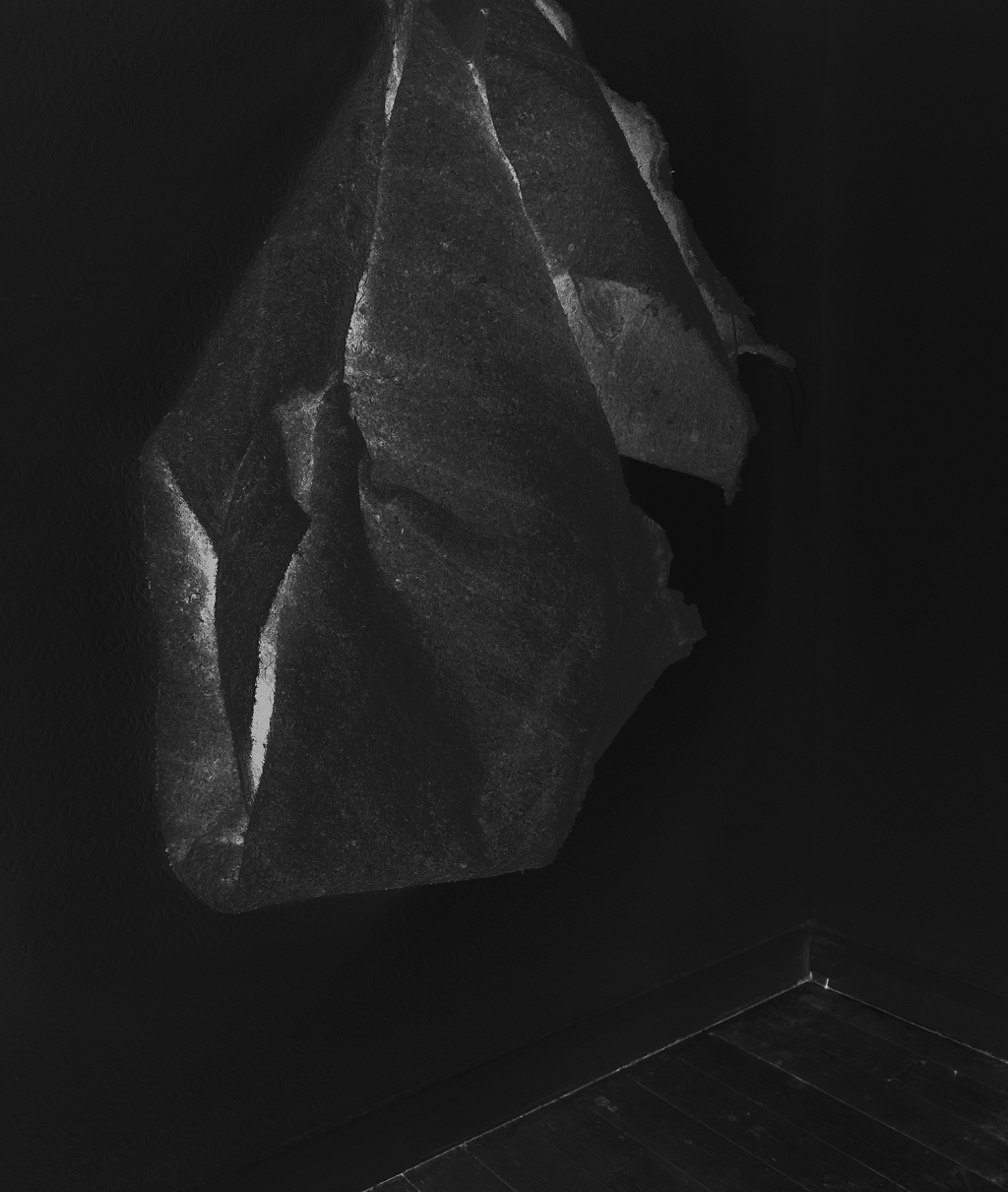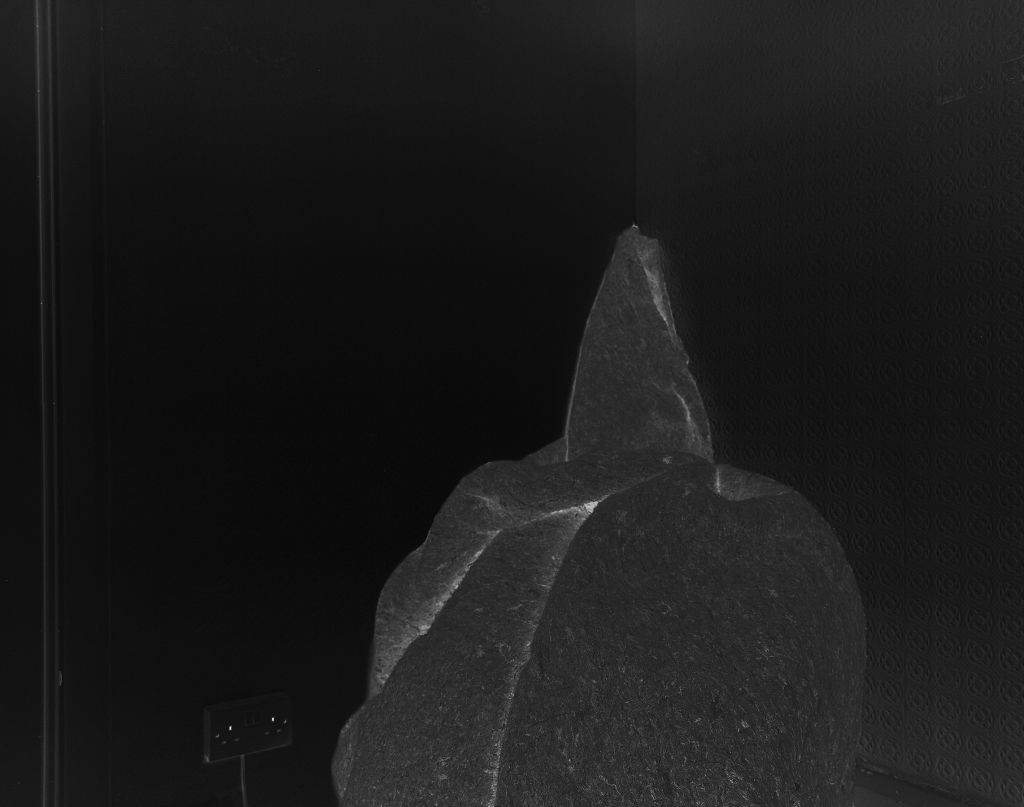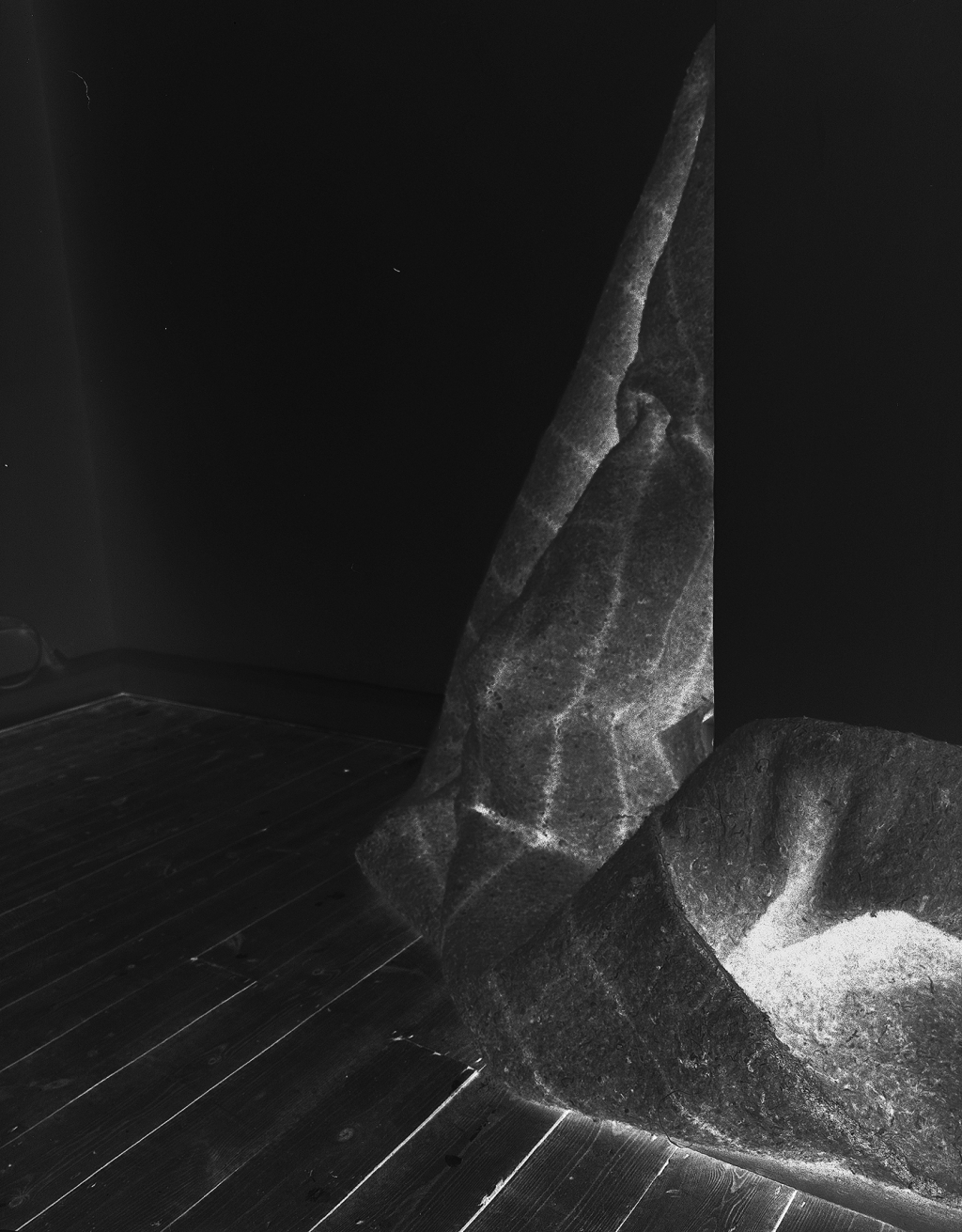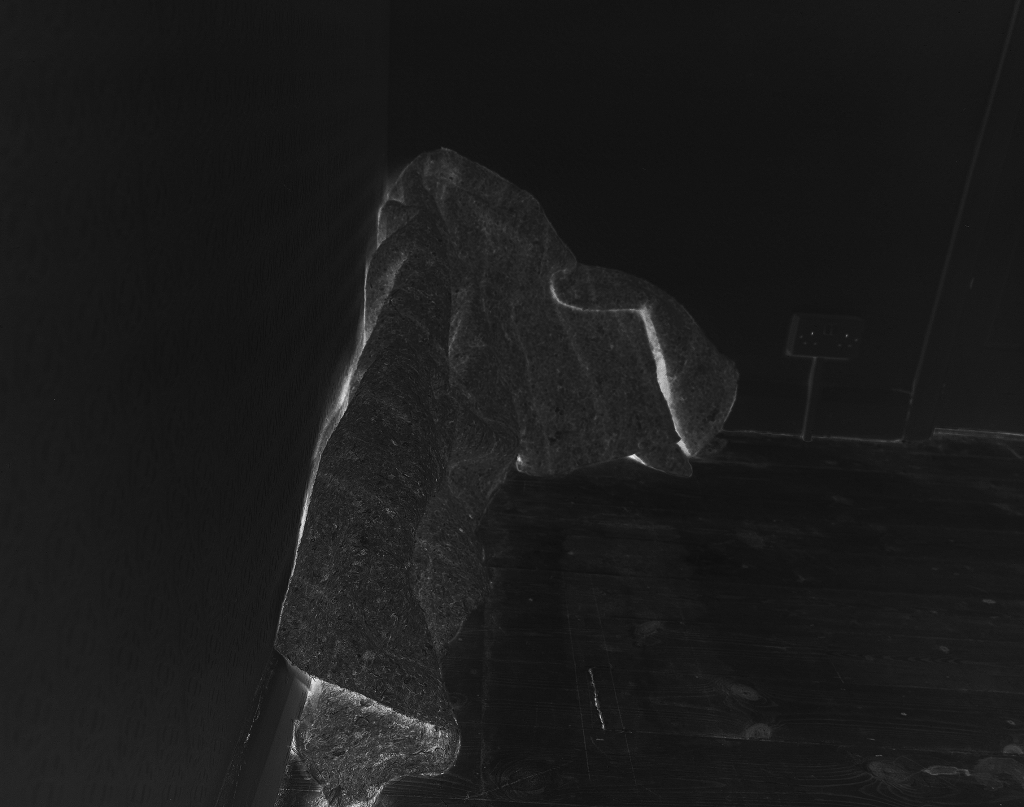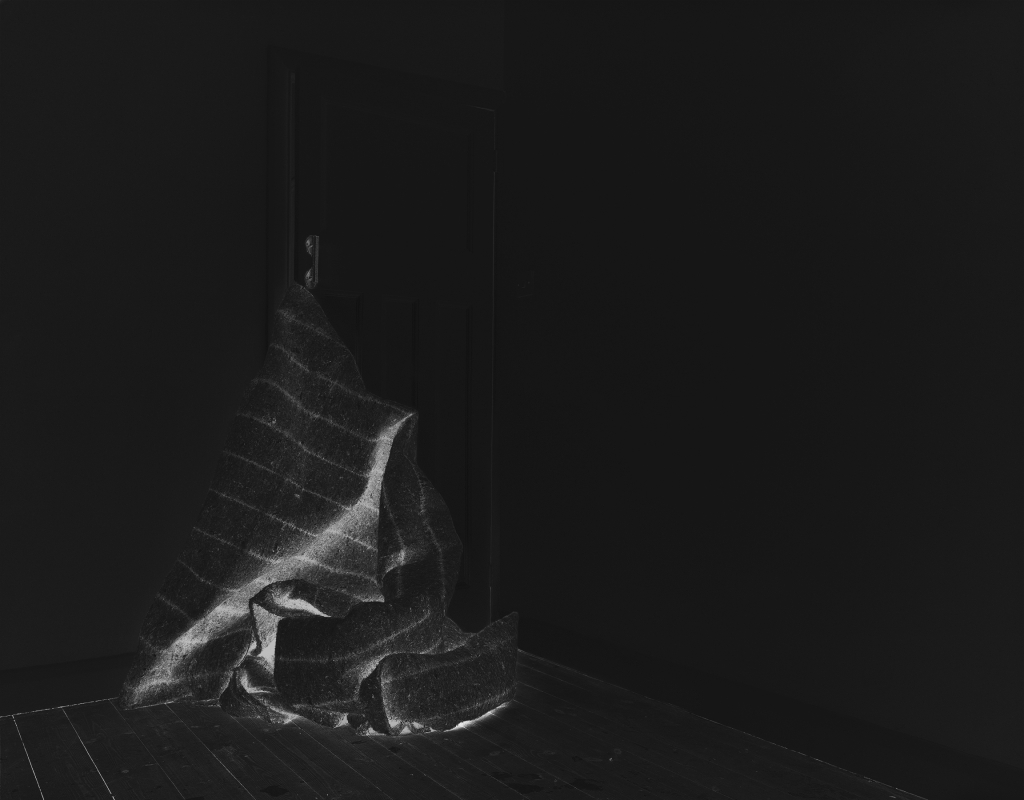Caster
One might refer to the discipline of architecture as functional, rational and grounded but Klenz’ work views the representation of the interior space of the house in an antithetical manner. Caster presents the house as more than a ‘machine for living’ as identified by the modernist Le Corbusier, and is more aligned with Surrealist poet Louis Aragon, for whom buildings were ‘thresholds to a kingdom of the marvellous’.
Caster uses the artist’s own house in London, which (when moving in) appeared to be inhabited, if not by the former occupants in their physical form, by their ghosts.
The work uses the carpet as a metaphor for the indexicality of presence - essentially the presence of absence. The carpet retains the traces of human existence: it is an object we tread history into, bearing our presence within its fibres or inscribed into its reverse. Weaved into the fabric of the carpet’s materiality is the existence of the former occupants of Klenz’ home, and the photographic series Caster transforms the carpet as an everyday domestic object into a piece of ‘mental’ furniture. The carpet becomes biomorphic: cocoon-like, exploding, concealing, embodying, imploding upon itself.
The works liberate the domestic space of the house from its traditional role and reconfigures the house into a space that no longer has a ‘merely’ utilitarian purpose but regards the house as a stage: a theatre of the domestic that represents the house as a mysterious space.
